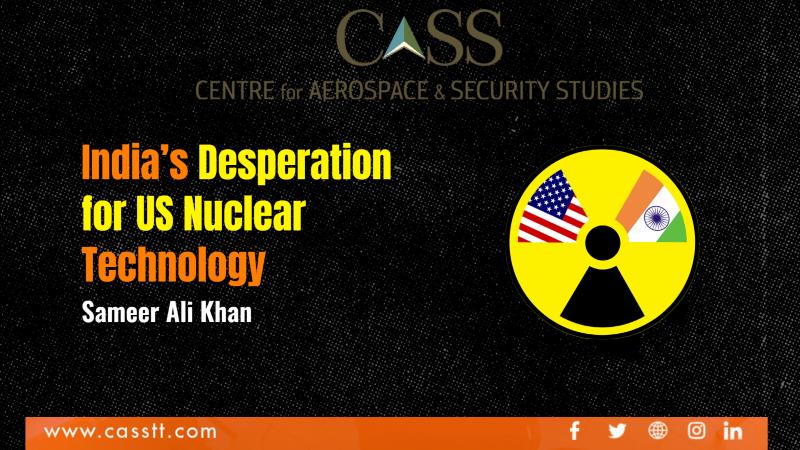India’s G-20 Sherpa, Amitabh Kant, has called for unfettered access to US nuclear technology to pursue Small Modular Reactors (SMRs) by ‘granting general authorisation to India.’ Previously, at the 2021 COP26 meeting in Glasgow, India’s then G-20 Sherpa, Piyush Goyal, had underlined that India’s climate and development goals were tied with its entry into the Nuclear Suppliers Group (NSG). It is important to recall that India signed a civil nuclear cooperation agreement with the US in 2005 and received an exceptional waiver from the NSG in 2008. The two developments paved way for Indian access to international civil nuclear cooperation which was restricted – albeit not completely – following its nuclear tests of 1974 and 1998. Since 2008 India, supported by the United States, has pursued membership of the NSG to secure a seat at its rules-making table.
Indian access to civil nuclear cooperation is restricted by its anomalous domestic nuclear liability laws and vertical proliferation potential – rather than pending membership of the group. Despite being a party to the Convention on Supplementary Compensation (CSC), Indian domestic liability laws hold the suppliers liable along with the operator. Under CSC, only operators are held liable.
As Indian pursuit of NSG membership fails to materialize, it is now demanding general authorisation status from the US. Under the Code of Federal Regulations, the US Department of Energy (DOE) maintains a list of ‘generally authorised destinations.’ This list includes the International Atomic Energy Agency (IAEA) and 47 countries that the US has signed civil nuclear cooperation agreements with. All of these states, unlike India, are members of the Nuclear Non-proliferation Treaty (NPT) and implement full scope IAEA safeguards – except the United Kingdom and France, the two nuclear weapon states recognised under the NPT. Countries in this list enjoy an easier access to US’ nuclear market and face lesser bureaucratic snags.
While there are no indications of the US considering such an action and the US DOE had previously declined such requests in 2015, it is important to evaluate how the existing Indo-US agreement and NSG waiver have played out. Once the Indo-US bilateral agreement was negotiated, it was espoused that it will serve US’ economic, non-proliferation and strategic objectives. Hence, it is important to take cognizance of how the earlier arrangements have fared in these three domains.
When it comes to economic incentives, it was projected that the deal would allow US companies to participate in a potentially USD 150 billion nuclear sector in India and the latter committed to purchasing 10,000MW of American reactors. Following the NSG waiver and bilateral agreements, India has imported nuclear fuel from Australia, Kazakhstan, Canada, and Russia. Similarly, Russia and France are constructing Nuclear Power Plants (NPPs) in India. But so far, none of the US companies have been able to do business with India because of latter’s peculiar domestic laws on nuclear liability. Since the US companies do not share state backing like the Russian and French, they are wary of entering the Indian nuclear market. As of February 2023, the two sides are still grappling with the liability issue.
On the non-proliferation front, it was believed that the pre-requisite separation plan would clearly classify India’s nuclear programme into civilian and military categories – restricting vertical proliferation potential. However, India was able to retain a third oxymoronic category of ‘civilian unsafeguarded nuclear facilities.’ Outside the IAEA safeguards, these are better considered as ‘military nuclear facilities.’ Experts believe that India-IAEA safeguards arrangement is ‘not fit for the purpose’ and potentially facilitates expansion of the country’s military nuclear programme.
A strategic incentive for the Indo-US agreement and NSG waiver was to initiate a rapprochement with India and prop it as a counterweight to China. This is the only domain that has seen some progress. Other than signing the foundational agreements (BECA, COMCASA, and LEMOA) and including India in the Quadrilateral Security Dialogue (Quad), the US has now emerged as a major arms supplier to the country accounting for 11% of its arms imports. While arming India like this will ostensibly help the US contain Beijing, experts point out that ‘India talks China, but acts Pakistan.’ Therefore, even the so-called strategic interests concerning China will have direct bearing on South Asian stability as India is likely to build and use this military asymmetry to its advantage against Pakistan.
Before facilitating further Indian access to US nuclear technology, it is important to objectively review the outcomes of what were considered landmark agreements in furthering Washington’s interests. So far, the latter’s nuclear industry has not benefited economically from these agreements and the anticipated non-proliferation gains remain elusive. Even on the strategic front, potential gains may be coming at the cost of stability in South Asia as experts remain sceptical over the degree of role that India may be willing to play vis-à-vis China.
Sameer Ali Khan is a Senior Research Associate at the Centre for Aerospace & Security Studies (CASS), Islamabad, Pakistan. The article was first published in Pakistan Politico. He can be reached at [email protected]
Image Design: Mysha Dua Salman





